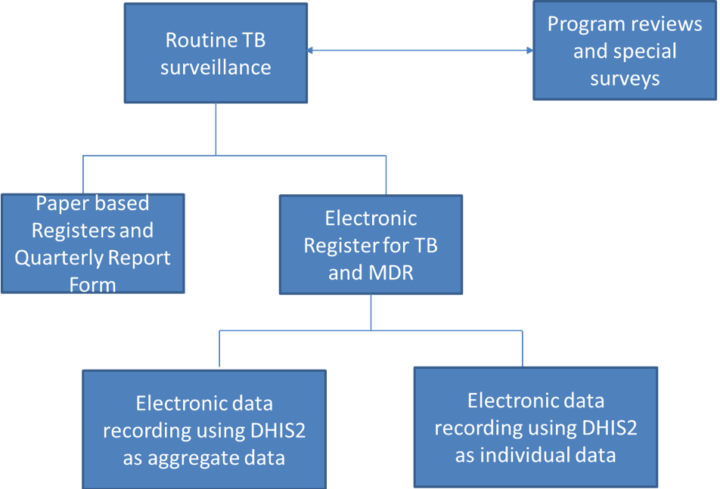Electronic recording and reporting for TB in Rwanda with DHIS2
Rwanda’s web-based monitoring and evaluation system empowers and supports the national TB program to keep up momentum and enact timely interventions

Since 2012, the Ministry of Health in Rwanda has been reporting health data in DHIS2. The TB&ORD (Tuberculosis and other respiratory diseases) Division adopted the use of DHIS2 in 2013 to upgrade the existing Excel based M&E database. DHIS2 was customized to collect aggregate data of different areas of program interventions. This has been the first step moving forward, customizing DHIS2 to support data collection of aggregated data from all health facilities.
Alongside the quarterly report of aggregated data, the second step was to transform the paper-based register in a web-based electronic register with individual data. This electronic register has two objectives: to improve data quality and to improve quality of case management. The latter involves a reminders system (SMS) towards TB patients, to remind, among others, treatment compliance (avoid lost to follow up patients, tracking transferred patients, decrease in number of doses not taken on time) and better identification of patients requiring special management, such as HIV-positive TB patients, eligibility to special lab techniques, etc.
Since August 2018, the National TB Program (NTP) decided to only collect individual data of TB cases to make eTB functional and usable, and to reduce the workload to improve quality of data in eTB. Improvements include: data entry form simplified to be user friendly (ex: one program for both DS and MDR-TB, program rules, etc), the number of data elements reduced, the creation of Program indicators, involvement of TB Focal persons to enter data rather than data managers.
The standardized WHO TB Tracker has been considered a great start and has been reviewed to align it to the local context and the NTP reporting requirements.
The following highlights the chronology of steps undertaken:
- Comparison of the existing TB tracker and WHO generic Tracker looking at metadata, list of indicators and definitions, NTP priority indicators, and partners indicators.
- Review and update of NTP data collection tools (Forms, Patient files, etc) and list of indicators.
- Validation of data dictionary for the contextualized WHO TB tracker, Data elements blocks reorganization to form Rwanda NTP Tracker Program stages.
- Customization and updating eTB to meet the new TB tracker program data dictionary structure that will collect only TB cases data.
- Testing and validating the new eTB processes are undergoing and the NTP is planning the go live very soon.
It is perceived that instruction of electronic TB surveillance system with individual data (electronic TB register) will improve quality of TB data and patient management, follow-up of patients during TB treatment and continuation of care and treatment after completing TB treatment.


